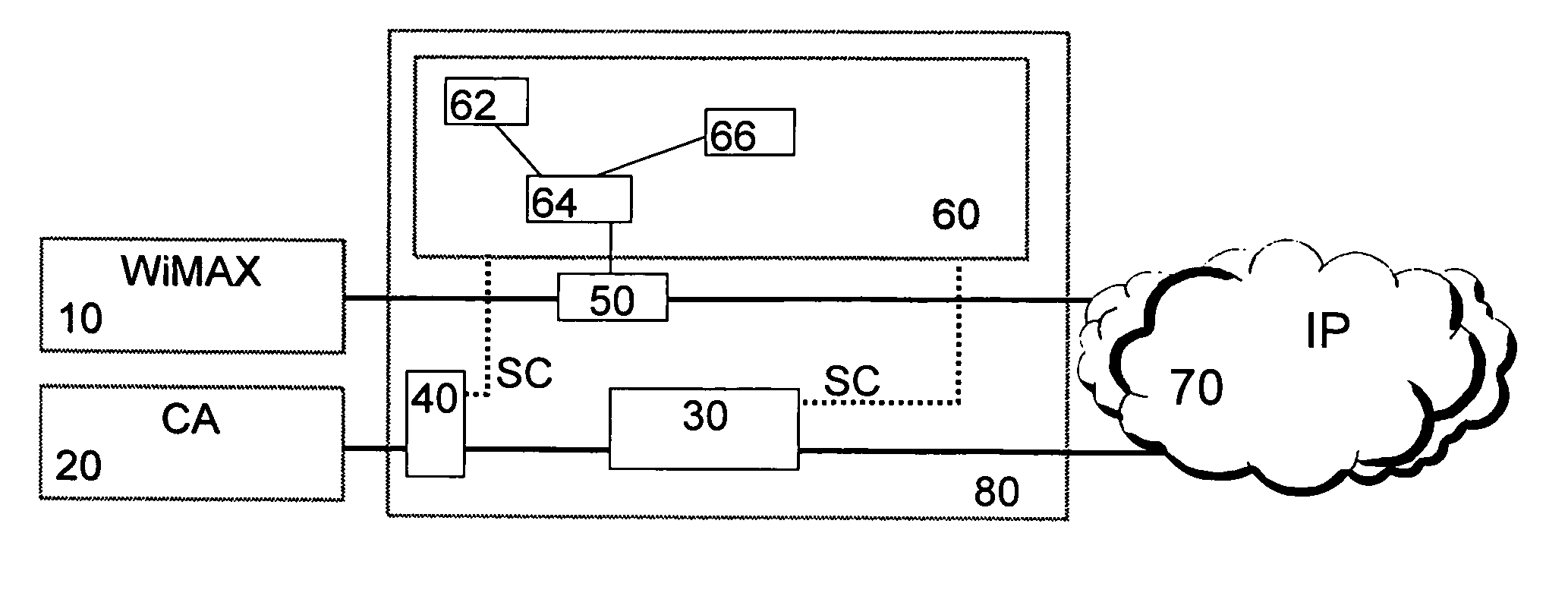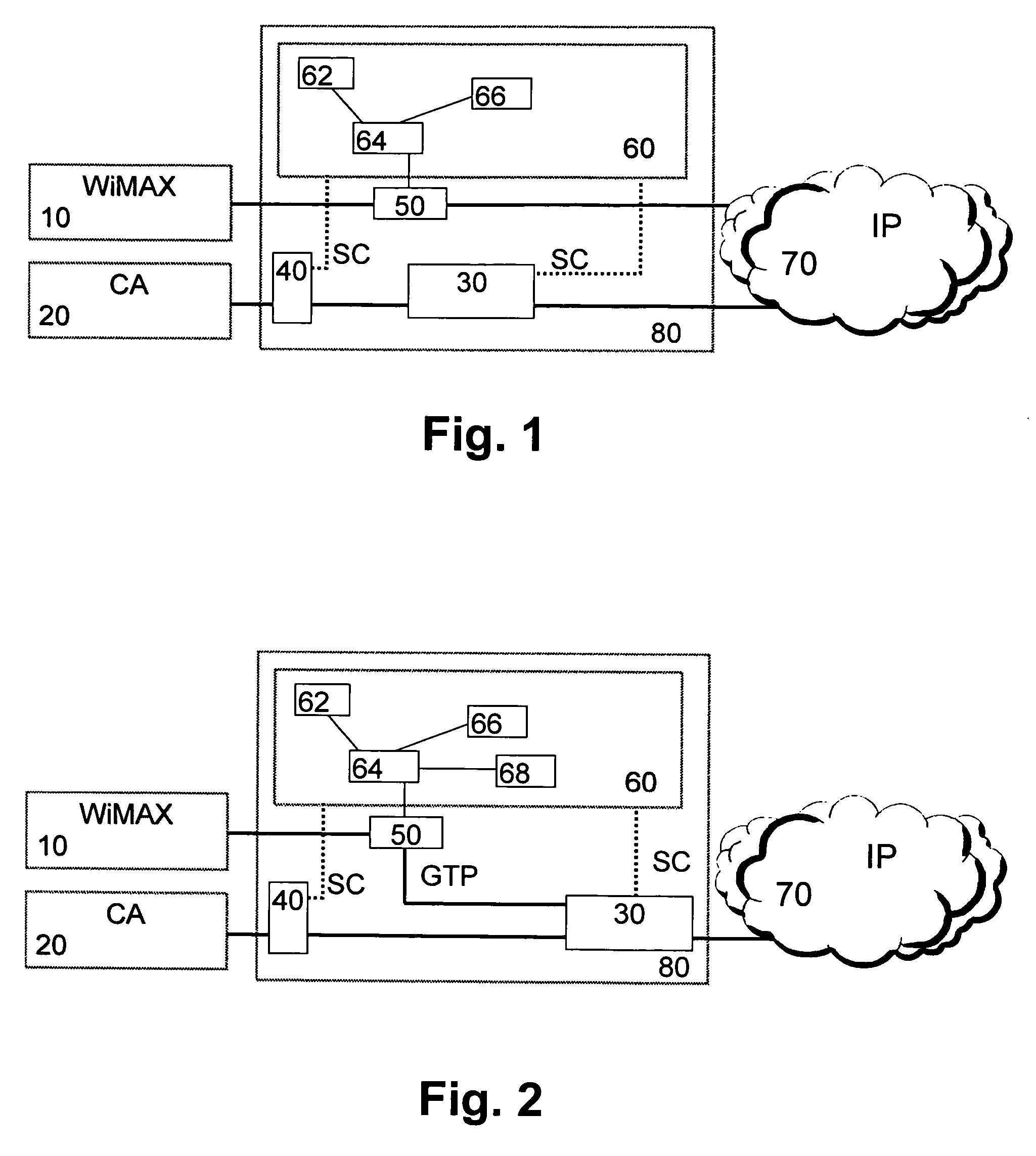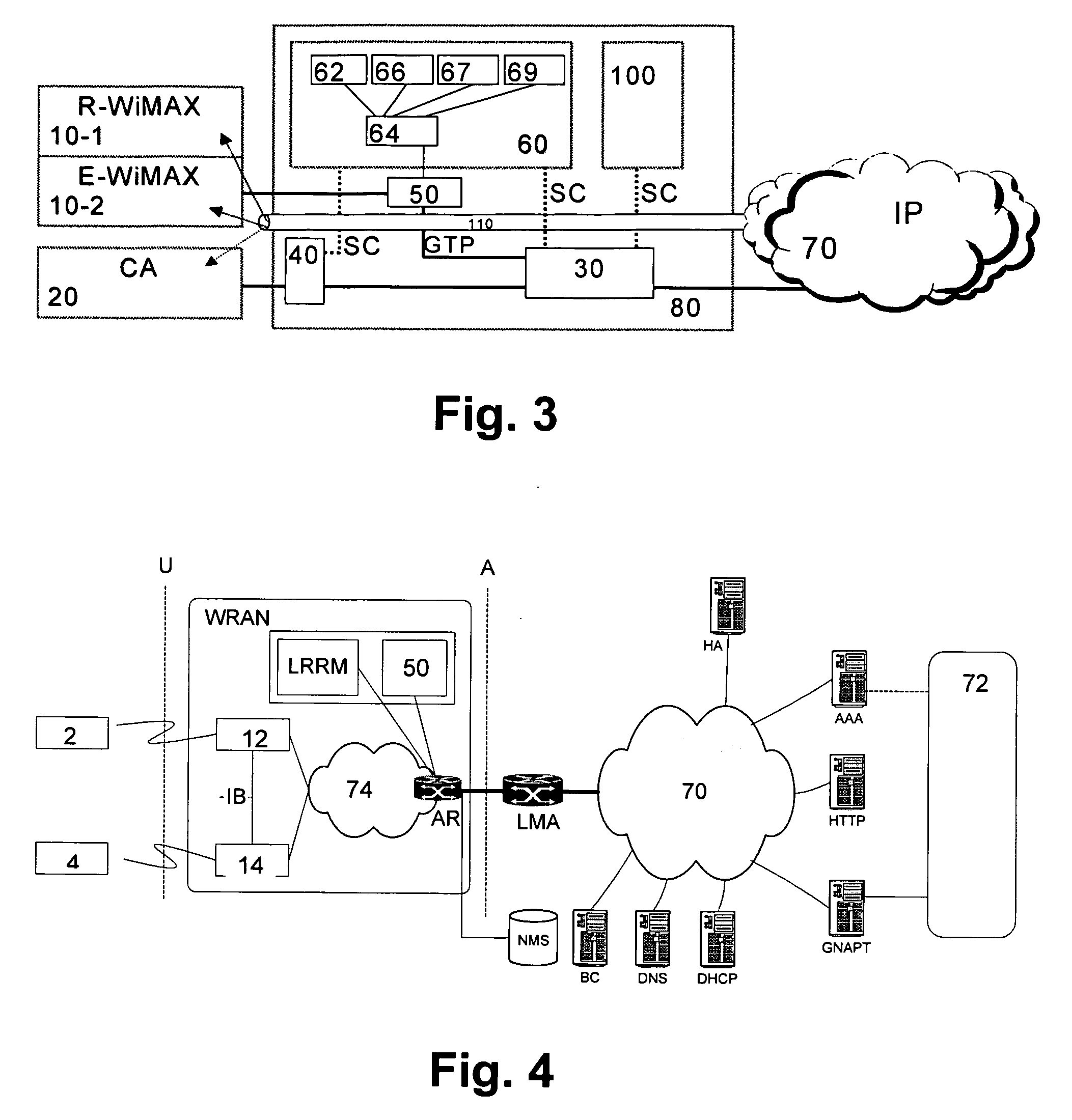Interworking between wireless WAN and other networks
a wireless wan and other network technology, applied in the field of access controller devices, can solve the problems of lack of higher layer procedures and functions when forming a wan, many networking issues of access technology that remain unsolved, and the ieee 802.16 standard doesn't define how to establish a wan, etc., to achieve the effect of high data rate, low cost and wide coverage of wireless local networks
- Summary
- Abstract
- Description
- Claims
- Application Information
AI Technical Summary
Benefits of technology
Problems solved by technology
Method used
Image
Examples
first embodiment
[0042]FIG. 1 shows a network architecture in which WiMAX is integrated to the multi-access architecture. Here, WiMAX is considered as a complementary access with minimum level of interworking, e.g. common authentication with the cellular network.
[0043] According to FIG. 1, a WiMAX access network 10 and a cellular access network 20 which may be an access network based on GSM (Global System for Mobile communication), GPRS (General Packet Radio Services), EDGE (Enhanced Data rates for GSM Evolution), WCDMA (Wideband Code Division Multiple Access), etc. provide access to a mobile operator core network 80. A core network 80 comprises at least one Serving GPRS Support Node (SGSN) 40 and at least one Intelligent Service Node (ISN) 30 which may be a Gateway GPRS Support Node (GGSN) 30 and which provides access to at least one IP network 70, comprising e.g. an enterprise network, the Internet, or the like, and at least one service provider. The SGSN 40 is connected to the cellular access ne...
second embodiment
[0052]FIG. 2 shows a network architecture in which the WiMAX access becomes a part of a multi-access machinery comprising e.g. authentication, common services, etc. Here, the WiMAX integration level is increased and a common and thus cost efficient service connectivity is provided by connecting the WAC 50 via the ISN 30 to the IP-based network 70. In this case, the WAC 50 may be adapted to establish a tunnel-based connection e.g. through the GPRS domain of the core network 80 to the ISN 30, by using the GPRS Tunneling Protocol (GTP) in order to get access to the IP-based network 70.
[0053] In the second embodiment, value added services can be provided for enterprises utilizing their common corporate VPN also via the WiMAX access network 10. Thereby, a wider service coverage for operator data-centric services can be achieved. In the service control sub-architecture 60, at least one additional subscriber directory 68 may be connected to the authentication server 64 for storing subscri...
third embodiment
[0054]FIG. 3 shows a network architecture in which WiMAX is fully integrated to the multi-access architecture with common control and user planes.
[0055] In addition to the features of the second embodiment, the ISN 30 is also connected to an IP Multimedia Subsystem 100 so as to exchange service control signaling SC. Furthermore, the WiMAX access network comprises a residential WiMAX access network 10-1 and an enterprise WiMAX access network 10-2. Due to the fact that common user planes are provide for the WiMAX access network 10 and the cellular access network 20, a user plane tunnel 110 can be established from the access networks to the IP-based network 70 through the core network 80.
[0056] The third preferred embodiment enables WiMAX interworking compliant with future cellular standards concerning roaming, terminal support and the like. Session continuity can be achieved by inter-access handovers. Furthermore, consumer services and business services covering voice and data can b...
PUM
 Login to View More
Login to View More Abstract
Description
Claims
Application Information
 Login to View More
Login to View More - R&D
- Intellectual Property
- Life Sciences
- Materials
- Tech Scout
- Unparalleled Data Quality
- Higher Quality Content
- 60% Fewer Hallucinations
Browse by: Latest US Patents, China's latest patents, Technical Efficacy Thesaurus, Application Domain, Technology Topic, Popular Technical Reports.
© 2025 PatSnap. All rights reserved.Legal|Privacy policy|Modern Slavery Act Transparency Statement|Sitemap|About US| Contact US: help@patsnap.com



